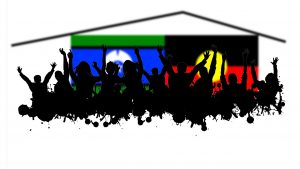 … some Aboriginal children need to reside with non-Aboriginal carers. Supporting the cultural needs of these children is not tokenistic, but profoundly important…
… some Aboriginal children need to reside with non-Aboriginal carers. Supporting the cultural needs of these children is not tokenistic, but profoundly important…
Margaret Nyland[1]
20 February, 2017When Advocates from the Guardian’s Office start monitoring residential care facilities for children and young people in state care in 2017, it will be armed with a new focus on Aboriginal[2] culture and connection and a new set of tools to complement it. (See the previous item on the Guardian’s website New indicators focus on Aboriginal culture and connection.)‘Our visit to each residential care house is necessarily quite short’, said Advocate Jodie Evans, ‘and so we try to spend as much time talking and hanging out with the residents as possible.’
‘We take time to review the records of the house before we visit. This gives us some valuable data and insights into how things are going at the house before we arrive.
‘Sometimes you can talk with young people about their Aboriginal culture and connections quite freely but for many it can be a sensitive and private subject and not something readily shared with a relative stranger.
‘The really important thing is not that they have those conversations with us but that they are having those conversations with someone and that their needs and wishes are being acted on.
‘How well this is being done can be hard to judge in the relatively short time we have in the young people’s space but there are a few good indicators.
‘Sometimes as an Advocate you can just look around – is there Aboriginal artwork on the walls, pictures of Aboriginal performers and athletes and music and TV shows featuring Aboriginal talent. This can be one indication of honouring and nurturing a resident’s Aboriginal identity.
‘Another indicator is the keeping of an Aboriginal Life Story Book and a memory box. If it’s done well and with the full involvement of the young person, it can show that that the house is making an effort to nurture their Aboriginal culture.
‘Likewise, Advocates will look for evidence of participation, not only in activities linked to popular Aboriginal events such as NAIDOC Week, but also of efforts to link the Aboriginal resident to communities that share personal connections, language and cultural ties.
‘For some young people, a visit to country, their community and their culture is invaluable in developing their Aboriginal identity. We know that to do it well requires a great investment of effort and cooperation but to have done so is powerful evidence to an Advocate of serious commitment to meeting residents’ cultural needs.
‘We know that residential care staff cannot do this work alone. Without receiving the information held by others and the practical support from others, their best efforts will be seriously limited. Our Advocates will be looking for evidence of an active involvement of other professionals such as case workers, Principal Aboriginal Consultants and teachers.
‘We will also be looking out for the use of the new Aboriginal Cultural Identity Support Tool. The in-depth information captured by the tool, if it is passed on sensitively, can be invaluable in helping residential care houses to best direct their efforts in rebuilding and strengthening connections to culture for their Aboriginal residents.
‘We are looking forward to getting out and among the young people and staff in residential care this year and especially to finding and sharing examples of good cultural support.
‘Around the middle of the year, we will also be taking a good look at how effective our monitoring has been in supporting real improvement in the provision of cultural support to young Aboriginal residents,’ she said.
1 The life they deserve: Child Protection Systems Royal Commission Report, Volume 1: Summary and Report(Government of South Australia, 2016) available at https://www.agd.sa.gov.au/child-protection-systems-royal-commission
2 For this article, where we use the term Aboriginal we shall take it to include Aboriginal and Torres Strait Islander peoples.
This article also appears in the February 2017 edition of the Guardian’s Newsletter.

